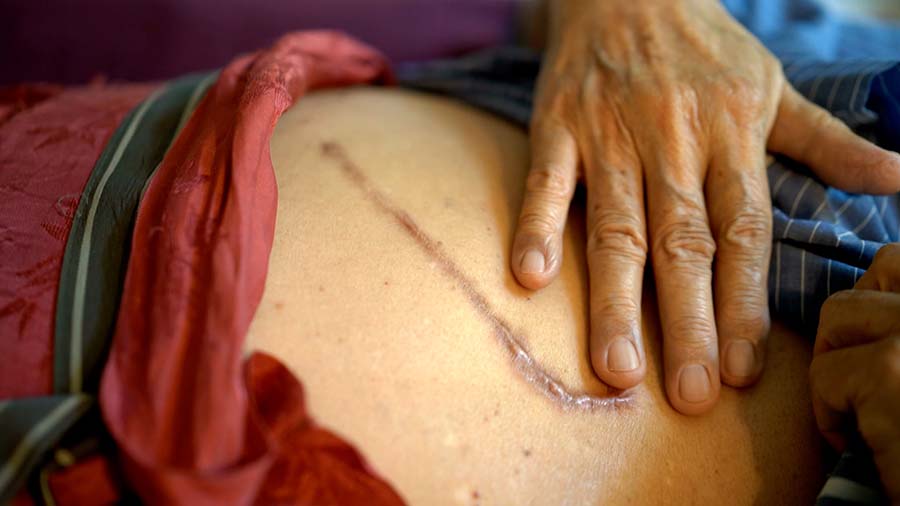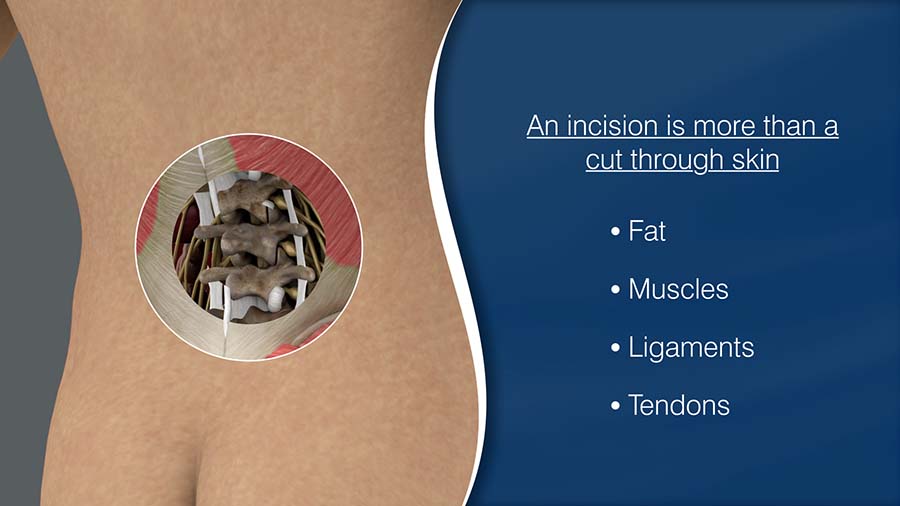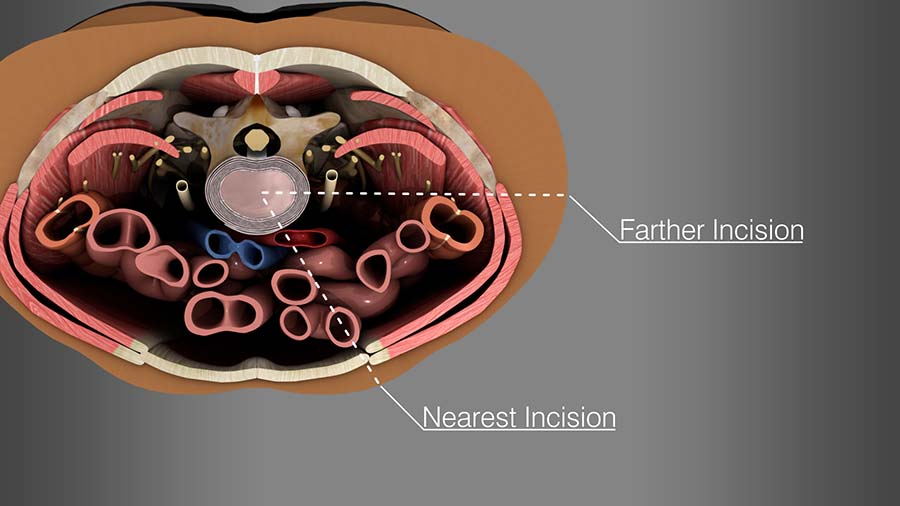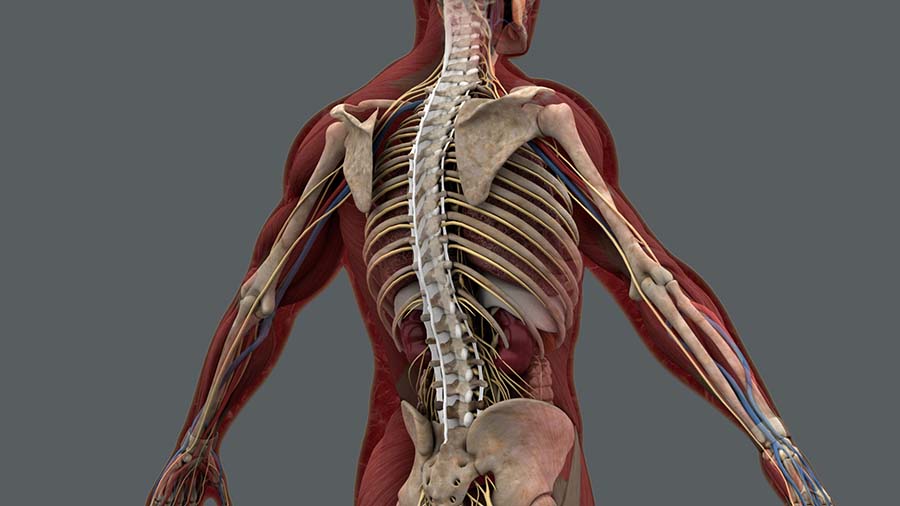Where to Make the Incision?

How does your surgeon decide where to make the incision? Before surgery, many want to know how and where the incision is going to be made — with the hope that the smaller it is, the lesser the pain will be. People also want to be reassured that the resulting scar will heal and fade as quickly as possible. These are real concerns but rarely addressed by the surgeon. Why?
Here in the US, tremendous effort is being made to use the term minimally invasive. From the perspective of the spine surgeon, that term means minimizing the disruption of the main stabilizing tissues of the spine. An incision is more than a cut through skin. It also involves everything that is cut, or moved, underneath the skin.

To give an example, if we make a two-inch incision at the level of the skin, depending on its location, different layers of fat, muscles, ligaments, and tendons might also need to be penetrated to reach the spine. An incision directly over the target spine area might make the most sense. It requires the least distance. But this is the ideal situation.

In another scenario, the two-inch incision is made at a greater distance from the target spine area. Why? Because between the skin and this area, there may be structures that need to be considered. The most direct A-to-B path may include having to remove these important stabilizers. This approach might also put nerves, blood vessels, or even the spinal cord in harm’s way. While the small incision may seem “minimally invasive”, if the surgical approach involves the manipulation of these important structures, it might not actually be the most minimally invasive approach.

Remember the surgeon’s primary goal is a successful operation. Understandably, as a patient, you’re concerned about the size and location of the scar. But if the surgeon determines the best approach results in a longer, more visible scar, please know that it’s because they want to maintain the integrity of the most important structures.
Ultimately, the most important decisions about how and where to make the incision, and the type of surgery performed are made with the health and safety of the patient in mind. The surgeon needs to balance these factors with the patient’s desire for a smaller, less visible scar.
A lot more thought went into deciding where to put a bandage.
If you are going to have surgery, it’s fine to discuss these concerns with your surgeon. But understand the surgery is performed beneath the skin — and there is much more at stake than a simple scar.
Until next time.
Citations
Del Castillo-Calcáneo, J., Navarro-Ramirez, R., Gimenez-Gigon, M., Adjei, J., Damolla, A., Nakhla, J., … & Hartl, R. (2018). Principles and fundamentals of minimally invasive spine surgery. World Neurosurgery, 119, 465-471. https://doi.org/10.1016/j.wneu.2018.06.205
Lee Peng, G., & Kerolus, J. L. (2019). Management of Surgical Scars. Facial plastic surgery clinics of North America, 27(4), 513–517. https://doi.org/10.1016/j.fsc.2019.07.013
Last modified: September 29, 2020









